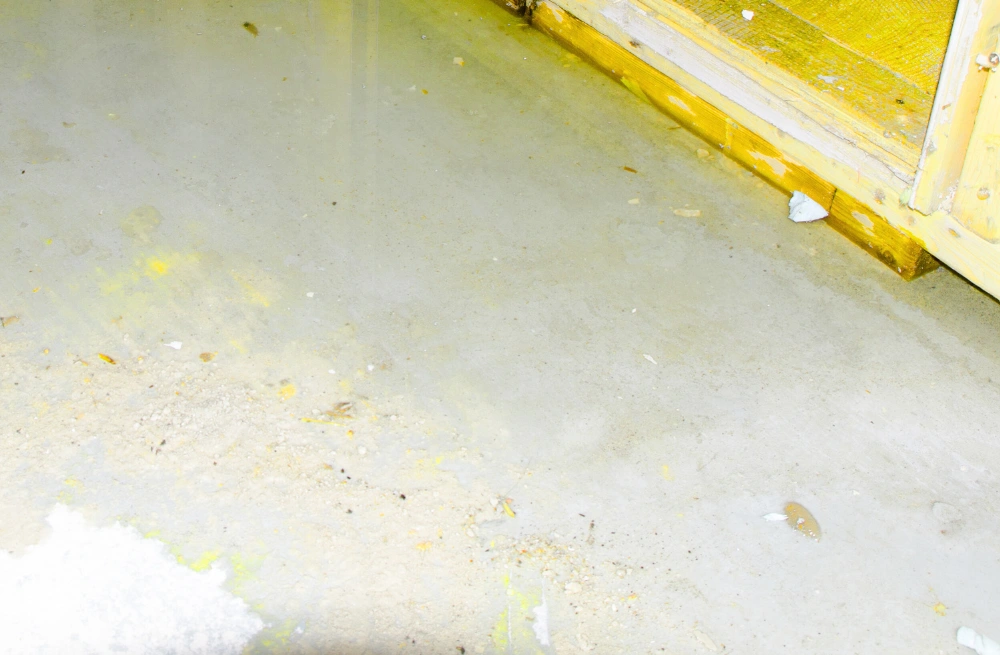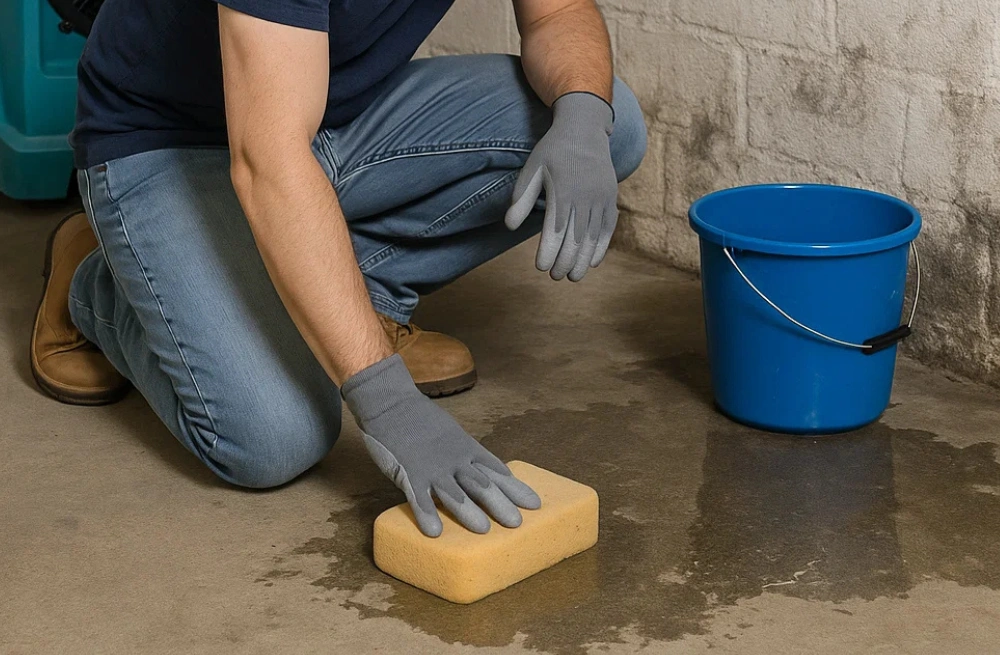
If your basement floor gets wet when it rains, you’re not alone.
In places like Manchester, Liverpool, and across Cheshire, older homes with cellars or converted basements are particularly prone to this kind of water ingress. However, just because it’s common doesn’t mean it’s normal.
Water showing up on your concrete or tiled floor every time the heavens open? That’s a warning sign. If you ignore it, that patch of damp might become a full-on leak or, worse, turn your basement into a breeding ground for mould.
Read this blog to learn why it happens, where to look, and how to stop water from coming into your basement when it rains.
Why is water coming up from my basement floor when it rains?

1. Hydrostatic Pressure
This one’s a biggie.
When it rains heavily, the ground around your home can get soaked. All that extra water puts pressure on your basement walls and floor. Over time, it can push water through small cracks or weak spots in the floor – that’s often why you see water coming up after a downpour.
It doesn’t need a big hole. Even hairline cracks in the floor or around the edge where the wall meets the floor (known as the cove joint) are enough for water to force its way in.
2. Poor Drainage Outside
If your garden slopes towards the house instead of away, or if there’s no clear escape for surface water, it ends up right against your property.
That’s bad news for your foundations. In homes across Chester and Warrington, we often see rain pooling next to back doors, patios or side paths that lean inwards. This can lead to water leaking into the basement after heavy rain.
3. Blocked Gutters and Short Downpipes
This is one of the easiest fixes and one of the most overlooked causes. When gutters are clogged with leaves or moss, water spills over the edge and lands directly next to your foundations.
Short downpipes make things worse, dumping litres of water in the same spot every time it rains. Over time, that constant saturation builds pressure against the walls and floor, leading to leaks. Regularly cleaning your gutters and adding low-cost pipe extenders can make a surprising difference.
4. Foundation Cracks and Old Brickwork
Many houses, like the Victorian terraces in Liverpool or 1930s semis in Stockport, were made without the modern damp proofing. That’s why these homes were exposed to years of driving rain and ground moisture, which made their bricks and mortar pretty porous.
Even the small cracks in the foundation or ageing pointing in the basement walls let water creep in. If you spot damp patches, crumbly mortar, or salt stains on the lower walls, it’s a clear sign that moisture is getting through.
Other Reasons Your Basement Floor Feels Damp
Sometimes it’s not rainwater getting in but moisture already inside the basement causing the issue:
- Humidity: If the room isn’t well ventilated, especially in the warmer months, moisture can build up and leave surfaces feeling damp.
- Plumbing leaks: Old pipes, washing machines, or nearby bathrooms can all be sources of drips or leaks that collect on the floor.
Still, if the damp shows up mainly after rainfall, it’s likely water from outside that’s sneaking in.
How Do I Fix Moisture in My Basement Floor?

There are a few routes depending on how bad the problem is. Here’s a step-by-step look at what you can do:
Check Outside First
- Clear your gutters and extend downpipes so they flow at least 2 metres away from your house.
- Adjust the slope of soil and paving so water flows away from the building, not into it.
- Install or unblock any surface drainage (e.g., French drains, soakaways).
Seal What You Can
- If you spot hairline cracks in the concrete or mortar joints, a specialist filler or waterproof sealant might help short term.
- But sealing alone won’t solve water leaking into the basement after heavy rain if the pressure outside keeps building.
Invest in Internal Waterproofing
This is the long-term fix. Internal basement waterproofing often involves:
- Installing a perimeter drainage channel under the floor.
- Adding a sump pump to actively remove water.
- Tanking slurry or membrane systems to fully seal walls and floors.
This kind of system is especially common in cellar conversions and homes in areas like Stoke-on-Trent or Halton with high water tables.
Use a Dehumidifier
Great for tackling moisture in basement floors when the issue is mild or caused by indoor humidity.
What About DIY?
You can certainly tackle the basics: fix grading, clear gutters, and buy a dehumidifier. But for recurring leaks or actual puddles, you’ll likely need professional help.
Google searches for “how to fix water coming through basement floor” or “basement floor gets wet when it rains but no visible leak” can lead you in circles. Specifically when each home has unique issues with age, structure, and surroundings.
Don’t Let a Damp Basement Get Worse
In towns like Manchester, Chester, and Warrington, a leaky cellar might just be the start. Ignored for too long, it can damage your home’s structure and value.
At Damp-Solutions, we help homeowners across the North West fix wet basements and prevent it from happening again. Whether you’re dealing with a leaky floor or planning a cellar conversion, our local surveyors will find the real cause and the right fix.
Learn more about our Basement Waterproofing services
Thinking about a Cellar Conversion? Click here
Contact Damp-Solutions to book your no-obligation damp survey today.
Call us on 01606 872 691
Or email: contact@damp2drysolutions.com
What Clients Say About Our Work
Customers across Cheshire, Manchester, and the North West trust our damp specialists for honest advice and quality work. From rising damp to mould problems, our reviews show how carefully and professionally we handle every job.
